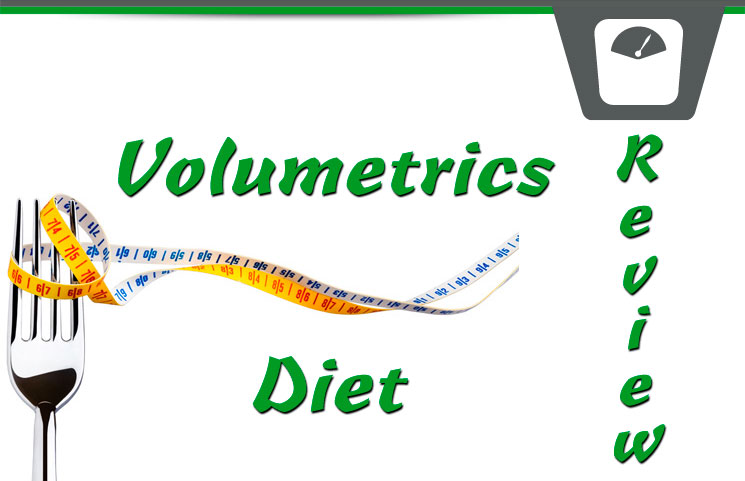The Volumetrics Diet Review
The Volumetrics Diet is a unique diet that follows one principle, which is to limit caloric intake, yet still consume a large volume of food.
What Is The Volumetrics Diet?
Essentially, the Volumetrics Diet follows the principle that satiety is based on volume, and that it is not based on the amount of calories, fat, carbs, or protein you consume.
We all essentially eat the same weight, or volume of food in a day, and the volumetrics diet uses the idea that eating healthier foods can lead to weight loss, yet not force you to be hungry all the time.
The diet was created by Dr. Barbara Rolls, a nutritional scientist who works at the Laboratory for the Study of Human Ingestive Behavior at Penn State University. According to Dr. Rolls, the volumetrics diet can help you refocus your diet to enable you to consume more food, without consuming too many calories.
Following this plan, you can continue to lose weight while providing your body with the right amount of foods.
A New Approach to Weight Loss
To start off, we should mention that nothing is technically off limits, which dramatically increases your chance of being able to stick with the diet in the long term.
Feeling deprived, hungry, and full of cravings are why most dieters abandon a weight loss program. The volumetrics diet takes care of this by allowing you to eat almost anything.
Also, the volumetrics is not a short-term diet. Instead, it is a long-term diet plan designed to shed extra weight, while focusing on healthy food choices as well. This type of diet is best for long-term success, and the doctors at the Mayo Clinic believe this style of diet is the only solution for long-term weight loss.
How the Volumetrics Diet Works
The volumetrics diet breaks down foods into four categories. These four food groups are:
— Low Density “Free” Foods: Non-starch veggies like broccoli, mushrooms, leafy greens, and all fruits are considered “low density foods” and are called “free.” These foods can be consumed at any time and in any quantity.
— Other Low Density Foods: Lean protein sources, starchy vegetables, legumes, and whole grains are still low density foods, but have a higher energy impact on your body. Eat these low-density foods in reasonable portion sizes once or twice a day, and it may be a good idea to combine these foods with the “free” foods.
— Medium Density Foods: Lower quality meat, bread, cheese, desserts, and similar foods are medium density foods. They should only represent a limited amount of what you’re consuming in a day, and should not be the core focus of your diet.
— High Density Foods: High density foods are fried foods, candy, cookies, butter foods, and oily foods. These foods should only be consumed in very small amounts and do not need to be consumed every day – although they can.
The volumetrics diet says to put three meals and two snacks per day to fulfill your daily needs. The bulk of your caloric and food intake should come from the both categories of low density foods.
High water-content foods will help you feel satisfied the greatest, so feel free to be as generous as possible with servings of fruits and non-starchy vegetables. In the event you finish a meal and are still hungry, you can top the meal off with another low density food.
Alcohol consumption is permitted in moderation, but they are classified as “high density.”
Truthfully, getting used to the classification may take some time and practice. Over time, you’ll learn how to identify which category fits a specific food.
For the best results, Dr. Rolls recommends spending 30 to 60 minutes of moderate exercise, which is standard among most diet plans. Keeping a record of food intake and activity levels is also recommended.
What Science Says
Penn State University conducted a year-long study with almost 100 women randomly divided into two groups. Half of the women ate a low fat diet allowing unlimited quantities of high water content foods, and the other half ate a standard low-fat diet.
Both groups managed to lose weight, with the low fat group losing 14 pounds and the high water content group losing 17 pounds. The women eating high water content foods ate significantly more food by volume, but consumed fewer total calories. They also never experienced significant hunger pangs.
Further research suggests eating water-dense foods may contribute to greater weight loss. A report published by the NIH found that people eating salad or broth-based soup before a meal consumed a significantly fewer amount of calories overall by the time they were finished with the meal.
Since the volumetrics diet focuses on plant based foods, the likelihood for weight loss and overall health improvement is high. According to the Physicians Committee for Responsible Medicine, diets rich in fruits and vegetables significantly reduce the likelihood for developing obesity, heart disease, diabetes, and potentially even cancer.
Final Thoughts On Volumetrics Diet
Whether or not you choose the principles of the Volumetrics diet is completely up to you. Some people need a more structured approach to dieting to lose weight. If you’re someone who struggles with food cravings or prefers a strict set of rules, then the Volumetrics diet probably isn’t right for you.
However, if you are looking for a practical and effective approach and you can handle flexibility, then the volumetrics diet may be the perfect long-term diet plan for you to lose weight and get healthy.









